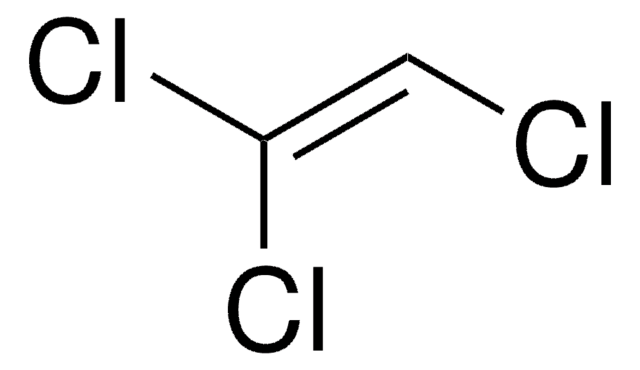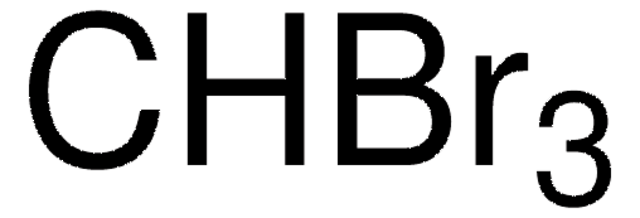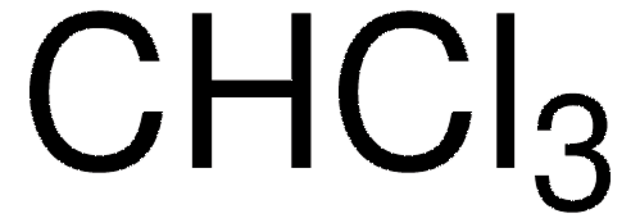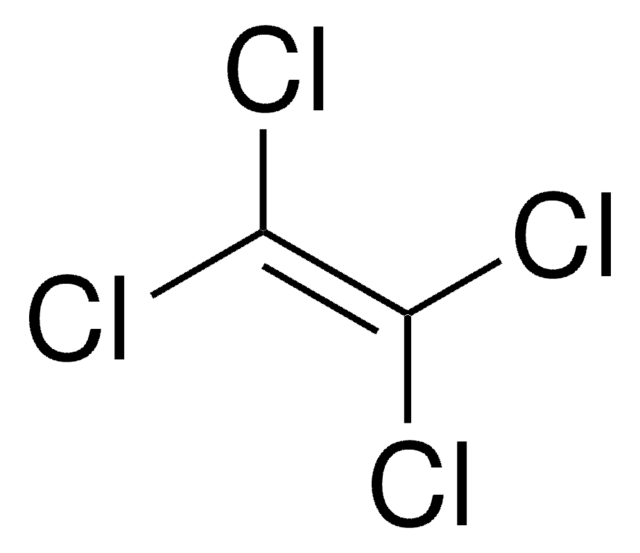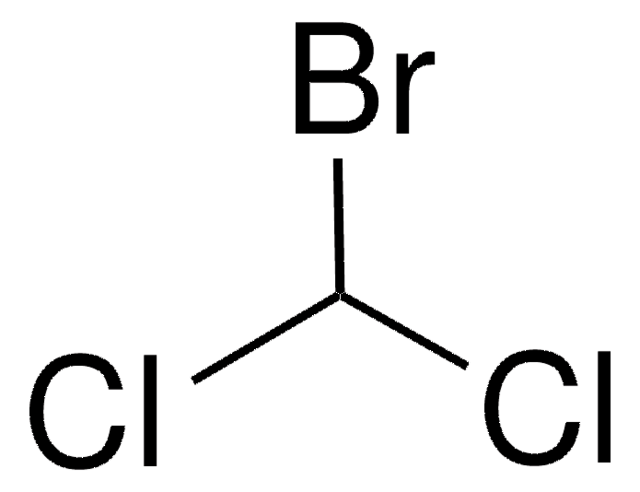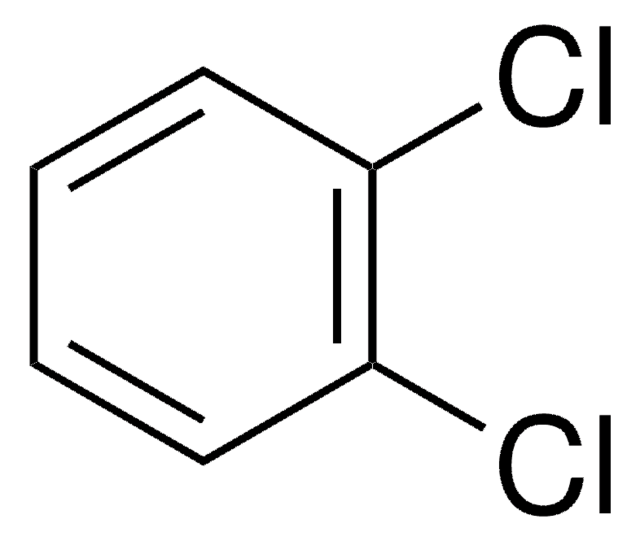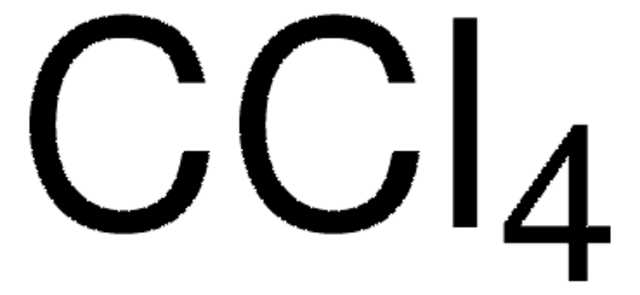36972
Bromoform
amylene stabilized, analytical standard
Synonym(s):
Tribromomethane
About This Item
Recommended Products
grade
analytical standard
Quality Level
vapor density
8.7 (vs air)
vapor pressure
5 mmHg ( 20 °C)
quality
amylene stabilized
shelf life
limited shelf life, expiry date on the label
technique(s)
HPLC: suitable
gas chromatography (GC): suitable
refractive index
n20/D 1.595 (lit.)
bp
146-150 °C (lit.)
mp
5-8 °C (lit.)
density
2.89 g/mL at 25 °C (lit.)
application(s)
environmental
format
neat
SMILES string
BrC(Br)Br
InChI
1S/CHBr3/c2-1(3)4/h1H
InChI key
DIKBFYAXUHHXCS-UHFFFAOYSA-N
Looking for similar products? Visit Product Comparison Guide
Application
signalword
Danger
Hazard Classifications
Acute Tox. 3 Inhalation - Acute Tox. 4 Oral - Aquatic Chronic 2 - Eye Irrit. 2 - Flam. Liq. 3 - Skin Irrit. 2
Storage Class
3 - Flammable liquids
wgk_germany
WGK 3
flash_point_f
86.0 °F - closed cup
flash_point_c
30 °C - closed cup
ppe
Eyeshields, Faceshields, Gloves, type ABEK (EN14387) respirator filter
Choose from one of the most recent versions:
Already Own This Product?
Find documentation for the products that you have recently purchased in the Document Library.
Customers Also Viewed
Protocols
US EPA Method 8260 describes the analysis of volatile organic compounds in solid wastes and ground waters. This application illustrates the analysis of many compounds commonly analyzed by this method using purge and trap coupled to GC-MS.
Our team of scientists has experience in all areas of research including Life Science, Material Science, Chemical Synthesis, Chromatography, Analytical and many others.
Contact Technical Service